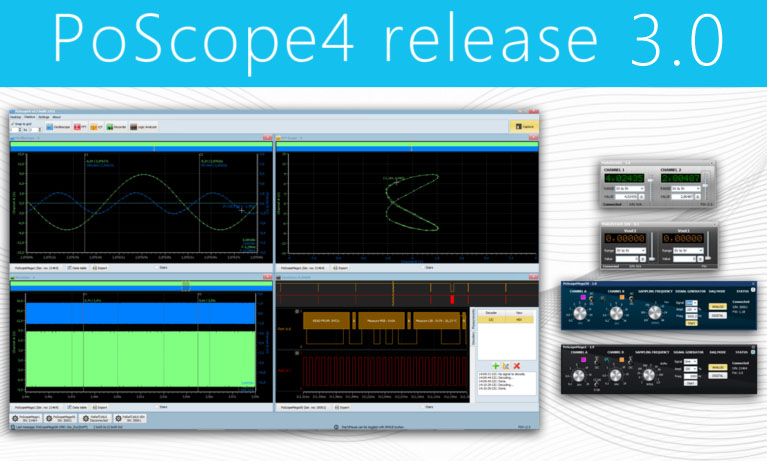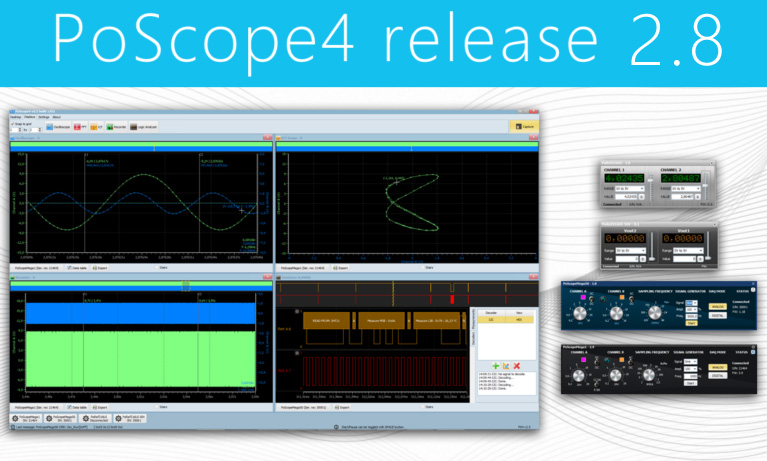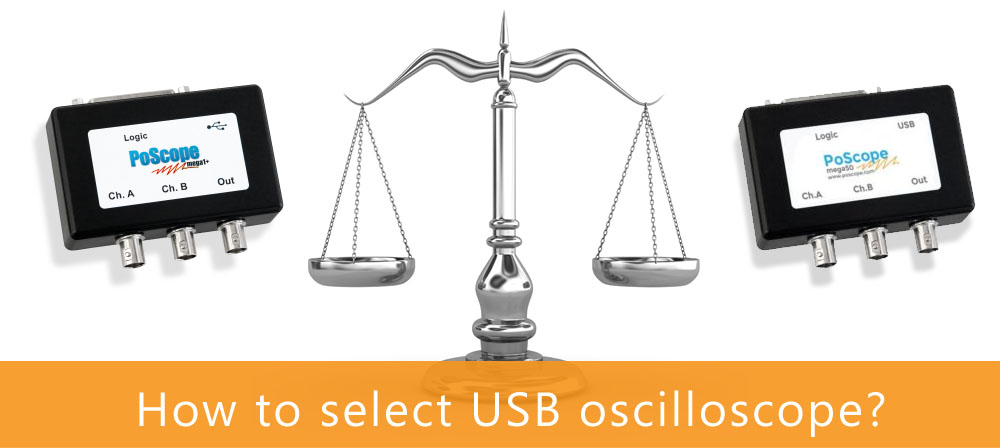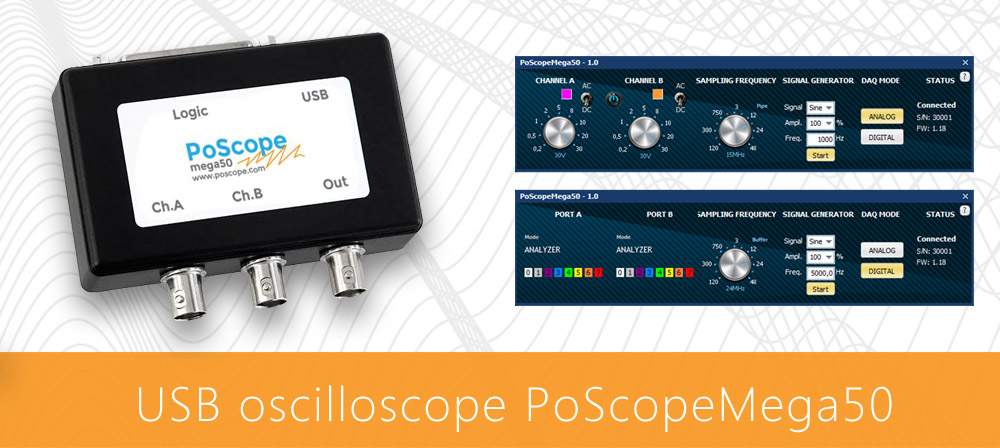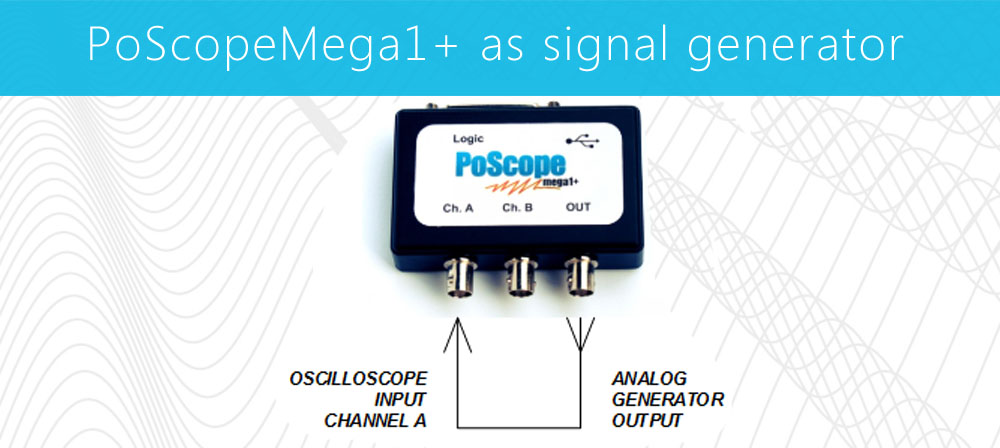PoScope4 release 3.0
The latest release of PoScope4 introduces new features and improvements PWM protocol decoder We’re introducing new PWM protocol decoder which helps with debugging of PWM signals. Improvements Improvement of export routines to speed up export to CSV and PCM formats for all displays. Added Autoscale buttons for each channel of Mega1 and Mega50 on control GUI … Read more

